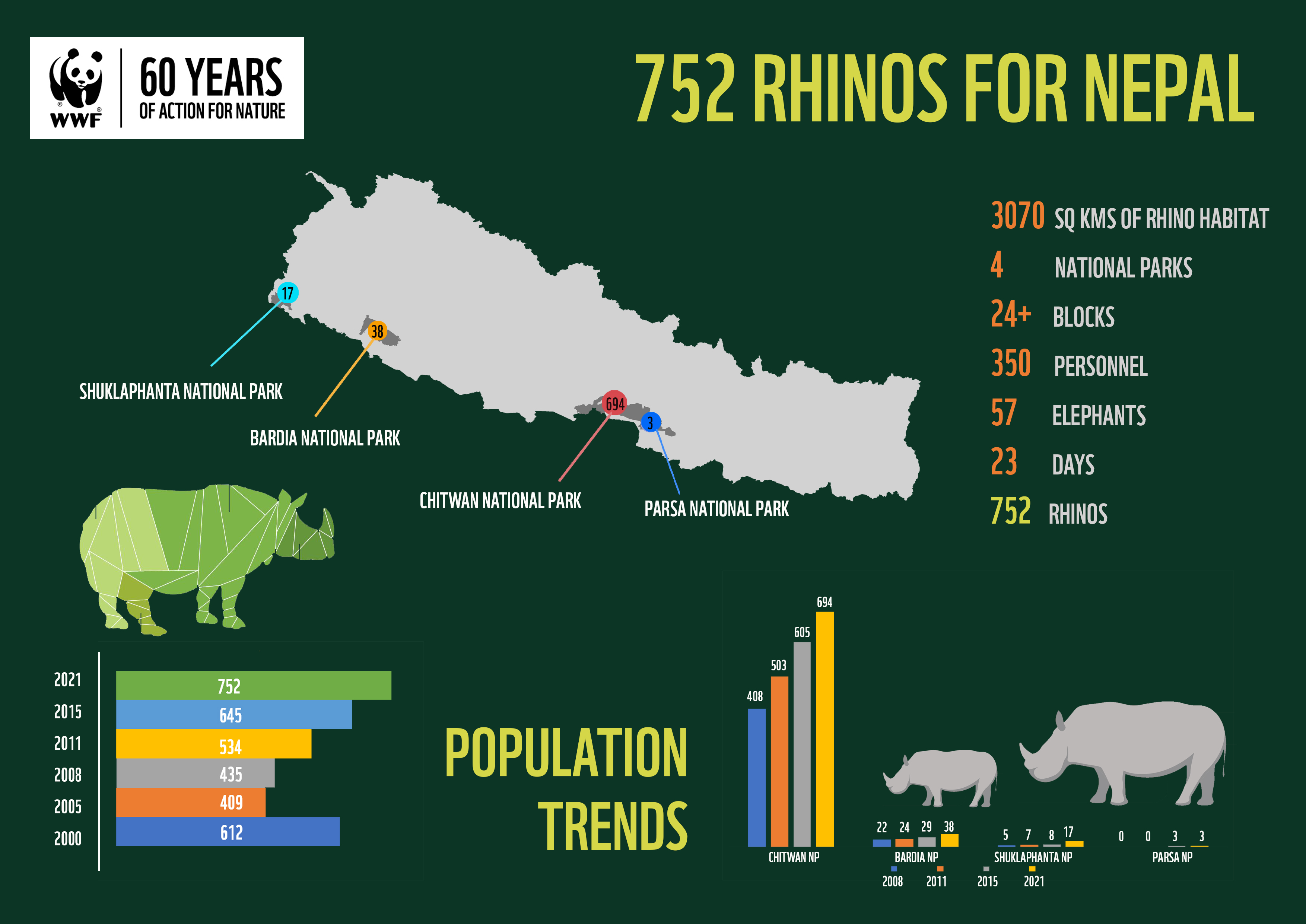Rhino Numbers on the Rise: 16% increase in Nepal’s rhino numbers
Posted on April, 10 2021
16% increase in Nepal’s rhino numbers
Kathmandu, Nepal – Nepal’s rhino population has shown a promising 16% increment as indicated by the results of the National Rhino Count 2021 released by the Government of Nepal today. The current population of the species stands at 752 individuals compared to the 2015 estimate of 645 in Nepal’s Terai Arc Landscape. The National Rhino Count 2021 began on 22 March 2021 and concluded on April 10, 2021 covering rhino range areas within the country including Chitwan National Park, Parsa National Park, Bardia National Park, and Shuklaphanta National Park as well as their buffer zones and vicinities outside protected areas.
The count was led by the Department of National Parks and Wildlife Conservation, mobilizing over 57 elephants and 350 technicians and trained personnel, sweeping parallelly across jungle blocks and documenting numbers based on a headcount. Populations estimates are based on individual rhino information collected, categorized based on statistics such as sex, age group, and unique identifying features. During the process, data on habitat conditions, invasive species in the area, and human activities in the region are also collected.
“The overall growth in population size is indicative of ongoing protection and habitat management efforts by protected area authorities despite challenging contexts these past years,” stated Ghana Gurung, Country Representative of WWF Nepal. “This achievement is yet another milestone in Nepal’s conservation journey showcasing the impact of concerted efforts of all stakeholders and providing much needed impetus to the global conservation fraternity.”
The count was conducted in collaboration with the Department of Forests and Soil Conservation, Nepal Army, Buffer Zone Users Committee, Community Forest Users Groups, NTNC, WWF Nepal, ZSL Nepal and other local organizations.
Every five years, Nepal takes up the immense task of counting its rhinos to monitor their status in the wild. The rhino count supports the assessment of management effectiveness in these regions and guides the nation’s rhino conservation strategy.
About WWF
WWF is an independent conservation organization, with a global network active in nearly 100 countries. Our mission is to stop the degradation of the planet's natural environment and to build a future in which people live in harmony with nature, by conserving the world's biological diversity, ensuring that the use of renewable natural resources is sustainable, and promoting the reduction of pollution and wasteful consumption.
For more information, contact:
Shayasta Tuladhar
Head - Communications and Education, WWF Nepal
Email : shayasta.tuladhar@wwfnepal.org



